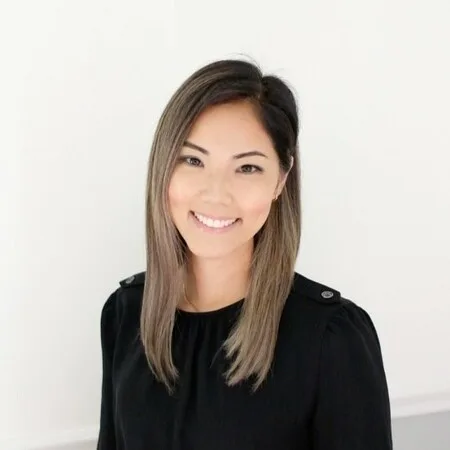Accelerate deals and increase win rates with the leading enterprise demo platform.
How to Attract (& Hire) Top-Tier PreSales Talent

February 10, 2025
Table of Contents
I had the honor of hosting a roundtable with the PreSales Collective about one of the biggest issues facing the field right now – how to attract and hire the best PreSales talent to your organization. With so many open PreSales roles at the moment, and the field expanding rapidly all over the globe, the hunt for great talent is on. To tell us what worked for them and their organization, our guests were:
Tom Banton, Global VP of Solutions Engineering at eightfold.ai
Stephanie Daniel, Director of Solution Engineering at Docusign
Luis Ganhão, VP of Solution Engineering at Celonis
Key Traits in PreSales
Luis says the key traits in a potential presales candidate are emotional intelligence (understanding what is going on and what to do), business acumen (understanding the specific use case and business processes), tech know-how because it’s a PreSales role, and the ability to adapt to the culture of your new organization.
Stephanie agrees and says curiosity is also huge – a candidate must want to understand and get to the heart of what’s happening with prospects and clients. And general interpersonal skills make a difference too. The ability to work with your team and also internal stakeholders across the org is huge in PreSales success, as is easily building rapport with customers.
Another is confidence – it’s necessary to project it when selling the business value of your solution. If you don’t have it, it detracts from the PreSales role as the trusted advisor.
Finding Top Talent
Tom gets to use his own company’s AI powered recruiting tool, which has been a help. They also hire internally a lot and created an academy for people who are just out of school.
One interesting thing he’s found is that if someone has an aptitude for some sort of art, it really works. He also looks for people who have industry expertise because you can teach them how to be an SE easily. And he has found 3 candidates through PSC, which has been a great source.
Luis is trying to nurture talent as well and add diversity at the lower end of the pyramid by hiring people from different backgrounds in their center of excellence, and then they go to the field. Some of the best talent also comes from customers, and can be powerful because they’ve seen and used the product and believed in it. But you can’t take someone from an active deal – they need to work the product for a year and then come over.
Non-Traditional Hires
Stephanie notes that she came from industry and wouldn’t be here today if someone didn’t see her potential. Today, that industry pool is one of her biggest sources of talent. The existing PreSales world right now is saturated, and if you’re only looking at existing talent you’re picking off from one company to go to the rest. Industry hires infuse a new mindset and frame into the organization.
The other area she’s looking at is attracting people to the role itself who might not have any experience. She just launched an SE internship program to attract talent even earlier, and it has been truly successful. She recommends looking at potential, not necessarily only experience. Luis agrees on internships – he’s also found them to be successful and one of his most important sources for new talent.
Stephanie says an SE mentorship program can also be effective to get people to understand the role without leaving their current ones. It allows for people to dip their toe in especially when coming from a post-sales or sales role, and there’s a formal process in place. Tom does the same thing and has also found it works well.
Ultimately, PreSales is not for everybody, so give them a chance to try it and see before they get hired.
The Hiring Process
Stephanie says expediency is really important right – it drives the process. She tries to identify gaps in the org and see what’s needed on the team to find extra qualities to look for. This can make the process a little slower, so she usually starts looking for a full slate of candidates to evaluate them all on par.
Hiring is a two way street and a heavy decision for both sides. So she tries to give as much info as she can in the interview and follow-up conversations. She includes other team members, and wants to see a presentation as well. It’s helpful to know what are things the candidate will have to work on when they join the team – no one comes in perfect.
Tom also says that the process has to go fast. He’s lost so many candidates between that critical 3-4 week period. Their hiring process says you need five sets of feedback, so sometimes he does panel interviews to speed it up.
He begins by sending them an NDA and demos the product to them – if it excites them, they can move forward. Sometimes he skips presentations if it’s a referral but his recruiters are trying to stop that so everyone goes through the same steps. Then he wants them to see the product and tell me what they’re excited about and why.
Tom is now trying to do the whole hiring process in under 3 weeks now, but speed is hard. To ensure it’s a good fit all around, he offers that candidates can talk to absolutely anyone on the team – helps with diversity, and also helps new people. The conversation is very open – they can even speak to executives.
Onboarding New PreSales Team Members
For onboarding, Tom assigns everyone an SE mentor – everyone likes to mentor, and so this can help scratch the management itch for more experienced team members as well. He also does a series of demo roundtables, where the new people demo to everyone.
There’s a PSC one now too so that new folks can demo to each other in a non-competitive way – you need to demo to someone outside the company eventually and get feedback from your peers, and this opens that path.
Luis says they have small tricks in addition to the steps above. Every week the new hires do demo sessions in a safe environment, demoing to each other and learning how to do it together. They also have weekly sessions called Where is the Value to teach them to engage successfully with customers. He’s trying to do more than teaching new hires the right click path – he gives them a full 6 month onboarding period where they begin taking ownership of their engagement with customers.
Watch the full episode here:
Photo by Christina @ wocintechchat.com on Unsplash






